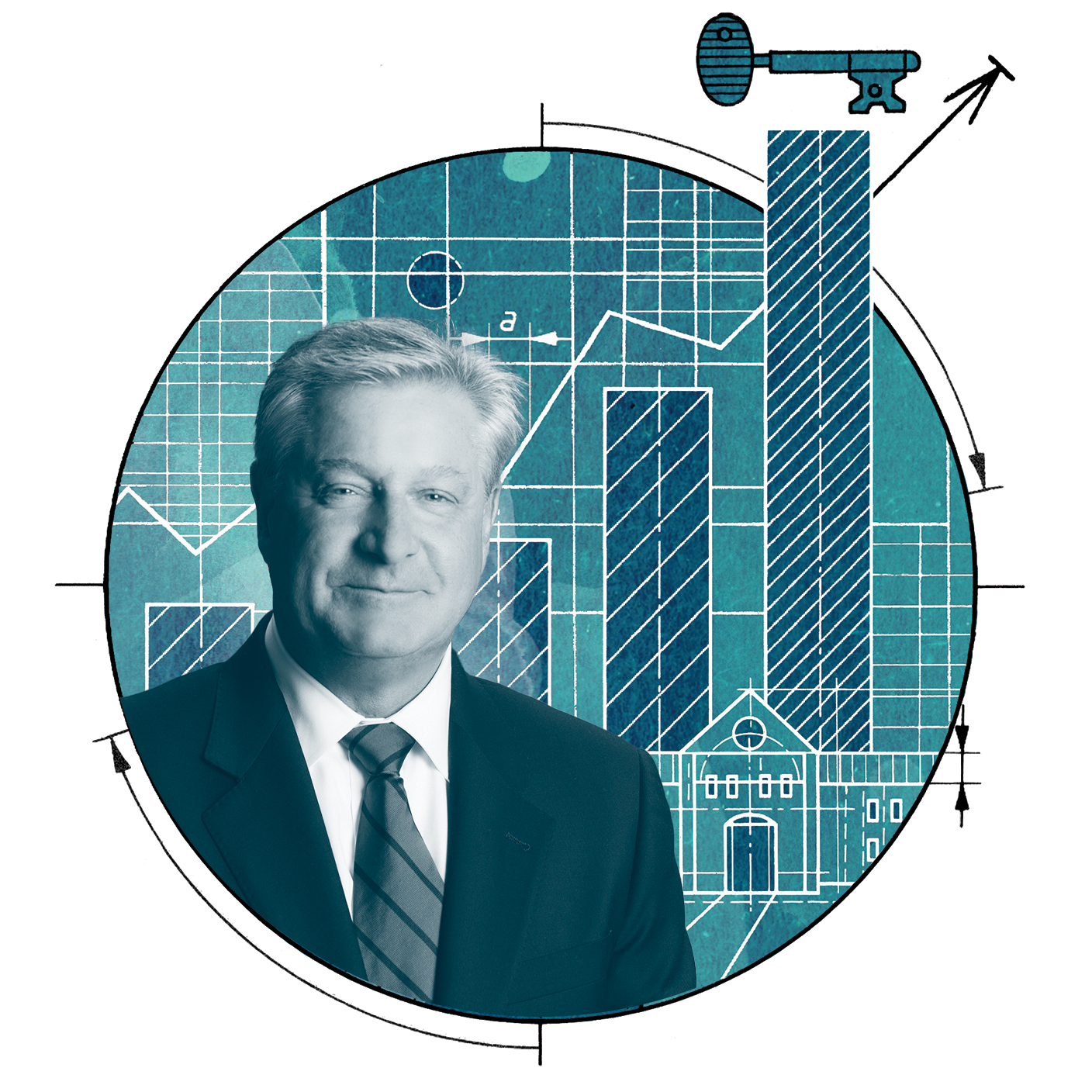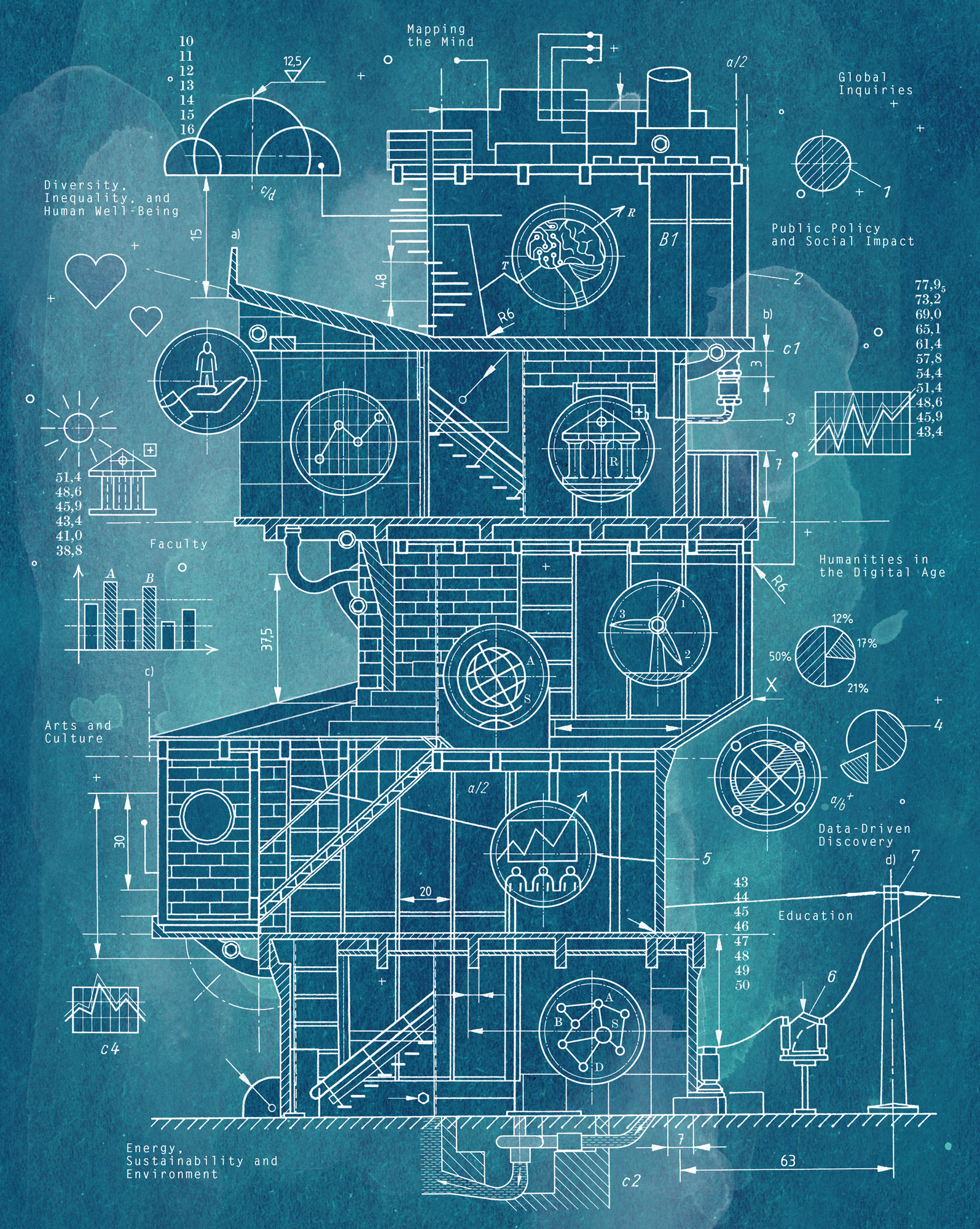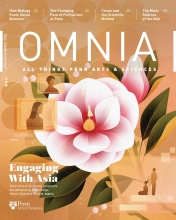Foundations and Frontiers: A Vision for the School, Revisited
Dean Steven J. Fluharty discusses the vision for the School of Arts and Sciences.

At the start of his term as Dean of the School of Arts and Sciences nearly nine years ago, Steven J. Fluharty, Thomas S. Gates, Jr. Professor of Psychology, Pharmacology, and Neuroscience, engaged the School of Arts and Sciences in a broad-based planning effort, involving roughly one-third of the School’s faculty, as well as students and staff. The result of this work was a comprehensive blueprint for the School’s future, a plan titled “Foundations and Frontiers.” The plan lays out strategies for recruiting and retaining top faculty, along with goals and initiatives intended to ensure excellence across the School’s programs of undergraduate, doctoral, and lifelong education. The “Frontiers” of the plan’s name refers to a series of themes that represent some of today’s most promising lines of research and discovery.

In the years following publication of this plan, the School saw some major successes in advancing its strategic priorities and, like everyone, also had to respond to some very unexpected challenges. We discussed with Dean Fluharty how the vision for the School that was captured in the original Foundations and Frontiers document has adjusted.
First question: How does it feel to be back on campus?
It feels great—the energy, the enthusiasm, the excitement. I know we’re not out of this completely, but there’s a return of what we love, which is our sense of community, our collective interactions.
Let’s go back to where we were with life on campus in March 2020. You were in the middle of a process that was intended to review and possibly update the School’s strategic plan. What work was underway at that time?
In the fall of 2019, prior to COVID, I had started to summarize what had been achieved across our foundations and frontiers and to share some preliminary thoughts on how we might move in new directions or maintain course, but perhaps with a new lens applied to our vision.
Pre-COVID, we had formed a number of faculty working groups and we were underway with discussions in those groups, and then of course, COVID hit. We managed to keep some of the working groups going through our whole remote experience, and I would say that, with all things considered during nearly two years of remote working, we kept the momentum going in many key areas.
What are some accomplishments that have been particularly rewarding for you in terms of advancing your vision for the School?
I would say there were several major accomplishments in the area of Energy, Sustainability, and the Environment. We were able to create the Vagelos Institute for Energy Science and Technology, and to recruit people like [Vagelos Professors of Energy Research] Karen Goldberg and Tom Mallouk, to name a few—we made close to 20 hires in this area. Then of course, we have construction underway on the Vagelos Laboratory for Energy Science and Technology, which will be a spectacular building. It will be home not only to outstanding science but also to VIPER [the Vagelos Integrated Program for Energy Research, an undergraduate dual degree program offered in collaboration with Engineering]. So the achievements in this area are huge.
We also recruited the renowned climate scientist Michael Mann, which pushes us in another important direction. Now we’re not only hitting it out of the park with energy research: we’re in a strong position with respect to taking on environment, climate change, and longer-term sustainability issues.
Another important accomplishment was establishing MindCORE [Mind Center for Outreach, Research, and Education]. Arts and Sciences had never really had a good home for next-generation neuroscience. Now we’re going to be building an imaging facility dedicated to advancing MindCORE’s research and teaching activities, which is another big step forward.
We’ve also enjoyed some major successes with our Global Inquiries agenda;for example, the many faculty-led initiatives we are funding through our Making a Difference in Global Communities and Klein Family Social Justice grant programs. These projects are bringing faculty and students together to address a wide range of global societal challenges. We also
launched a new Center for Latin American and Latinx Studies and established the Kim Center for Korean Studies. We’ve expanded our commitment to Asian American Studies, with new faculty recruitment underway. And in the humanities, we also saw the launch of the Price Lab for Digital Humanities, which is a critical resource for students and faculty and continues to be an attractive faculty recruiting tool. People want to come to Penn and they want to come to Penn Arts & Sciences because of the kinds of things we can enable when we do things like that.
What are one or two developments impacting the School that you could not have foreseen before COVID?
The biggest would be the major investments that the University is making in the sciences. The recent commitment of $750 million will be making it possible for Medicine to pursue groundbreaking new directions in research, and Arts & Sciences and Engineering will also be leading ambitious initiatives. We’ll be able to pursue new faculty hires in energy and sustainability, and in data science, which will advance our Data-Driven Discovery initiative. We’ve already done some great faculty recruiting in this area; for example, in the social sciences, we recruited Anthony Braga into Criminology to create the Crime and Policy Lab (see p. 44). The Data-Driven Discovery initiative is also going to have a huge impact on education in data science. We’re now positioned to develop undergraduate programs and graduate certificates that give the next generation of students and scholars the data tools they need.
The biggest surprise for me is that thanks to this investment we’re now in a position to build a new Physical Sciences Building, which is going to provide us with much-needed new space for teaching and research. And we will also be able to renovate DRL [David Rittenhouse Laboratories], which houses Physics and Astronomy and the Math departments, along with some of our faculty from Earth and Environmental Science. DRL dates all the way back to 1954, and arguably should have been renovated 25 years ago.
It’s not just important as the home of these faculty. DRL is one of Penn’s most important buildings for undergraduate teaching on campus. So the impact that renovating and modernizing DRL will have on teaching, as well as recruiting and housing our faculty, will be huge.
So I would say this new investment by the University is a game changer that will raise us to a new level of impact. And the mRNA technology that enabled development of the COVID-19 vaccine is a part of this story. I was Vice Provost for Research in the late 2000s when the mRNA patents were actually issued, and none of us could have had a clue about their full potential at that time. It was not easy to get drug companies interested in the use of those patents because the applications of mRNA were not clear. Kudos to the Perelman School of Medicine and a few individuals who worked very, very hard to move it forward. Now this technology is having a positive impact on the University’s bottom line, and it’s likely to lead to a lot of groundbreaking work in the treatment of disease.

This seems like a great story of validation for basic research. How do we keep people focused on the fact that successes like the vaccine don’t happen without basic science?
You can never emphasize enough that advancement in basic science happens on a long timeline. You cannot look at an annual return on investment—you need to have a much longer lens. The way you get to breakthroughs is by hiring the very best faculty, and recruiting the best graduate students, and giving undergraduates opportunities to work in labs, keeping the machinery of basic science moving. Bright minds get it, and they invest their time and energy in moving it forward. They don't necessarily think immediately about application. They think about advancing the science and assume that at some point discoveries will emerge that have applications to real-world problems.
How does this tie back into your thinking about the mission of the School of Arts and Sciences, or the liberal arts in general?
This process of discovery, and building critical knowledge over a longer timeline, doesn’t just happen in science—it happens across all of our departments. Situations like what we are seeing in Ukraine remind us of how interconnected we are, and how basic understanding across disciplines in the humanities and social sciences are essential to our ability to thrive as a global society. We need scholars who provide understanding on history and culture, and experts who are able to inform policy. This kind of academic expertise is why the Department of Defense, for example, asked Michael Horowitz, from Political Science and Perry World House, to lead a new office within the Pentagon dedicated to shaping U.S. defense policy on the use of new technologies. The most pressing issues of our time require the insights from experts in all disciplines, which is why our strategic plan focuses on strengthening all of our departments—it always comes back to our foundations.



